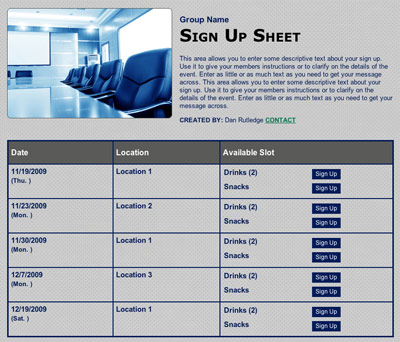10 Ways to Improve Employee Training and Development Programs
 Employees who value training programs are the ones you want because it means they are always seeking ways to improve themselves and learn new skills in this rapidly changing world. If you're looking to attract and retain the very best, it's worth it to invest in training and development. Employees who value training programs are the ones you want because it means they are always seeking ways to improve themselves and learn new skills in this rapidly changing world. If you're looking to attract and retain the very best, it's worth it to invest in training and development.
An added bonus: Training and development programs are among the benefits that younger workers value most, and given that Millennials now represent the largest generation in the workforce, employers should take note. Keep these 10 ideas in mind to make your company's training and development programs great:
- Start with the goal in mind. Whether it's increasing your sales numbers, improving employee retention or decreasing human resources complaints, you've got to know what you want to accomplish. It's OK to even have several goals you want to accomplish at the same time. What's important is to have them clearly in mind when designing your program.
- Ask your employees what they want. Employees will likely have a pretty good idea of where their skills deficits might lie. And, if they have a hand in shaping training and development programs, they'll have a much better attitude about participating. You won't be able to please everyone, but you might be surprised at the creative and thoughtful ideas you get if you just ask.
- Carve out time for it. People already feel like their plate is full. Lightening their load so they have time specifically set aside for training will make it seem like less of a burden and show them how important their development is to your organization.
Set up conference room reservations using an online sign up! SAMPLE
- Start small. Rather than rolling out a big, expensive initiative, start with a pilot program — or two. It might take a couple of attempts to discover what clicks for your team.

- Stay small. Given the rapid pace of change in today's marketplace, certain skills learned in training could quickly become obsolete. One strategy for dealing with the constant state of flux is to offer frequent, continuous training in small doses. In the 21st century, we all have to become lifelong learners to keep up.
- Make it good. Invest in the best quality instructors and programs, even if it means you have to do less training to keep within your budget. The last thing you want is for your employees to feel like you've wasted their time or insulted their intelligence with silly, amateurish training exercises.
- Do it yourself. Some of the best training and development talent may already be in your organization. Let your managers know that developing employees is part of their job, but also be aware of what non-managers have to teach their colleagues. Give employees a chance to shine by sharing what they've learned, especially if they've just completed a big project or passed a major milestone.
Schedule open enrollment appointments with an online sign up! SAMPLE
- Make it flexible. From Baby Boomers to Millennials, you quite possibly have five different generations of employees in your workplace. Some will want to do their training on their mobile phone. Others might be more inclined to sit and listen to a teacher in a classroom setting. Keep in mind the different learning styles of team members when creating a training program, and try to have something that appeals to each of them.

- Consider cross-department training. Training and development programs are a great time to foster the kind of company-wide camaraderie and understanding that doesn't happen when people are sitting in their respective cubicles. It can also broaden employee skill sets and make the company function better as a cohesive whole.
- Measure results. If you made clear goals before starting your training program (see above) then this actually shouldn't be that hard. Numbers can't measure all the benefits you get from training, but they can help you see if you're headed in the right direction. And if you can actually measure the progress you're making, you'll be 100 percent more likely to continue making employee training and development the priority it should be!
Training and development for your employees will help ensure you have the best workforce possible. Investing on the front end could pay big dividends for your bottom line.
Jen Pilla Taylor is a former journalist and mother of two school-age children.
|
 Employees who value training programs are the ones you want because it means they are always seeking ways to improve themselves and learn new skills in this rapidly changing world. If you're looking to attract and retain the very best, it's worth it to invest in training and development.
Employees who value training programs are the ones you want because it means they are always seeking ways to improve themselves and learn new skills in this rapidly changing world. If you're looking to attract and retain the very best, it's worth it to invest in training and development. 
